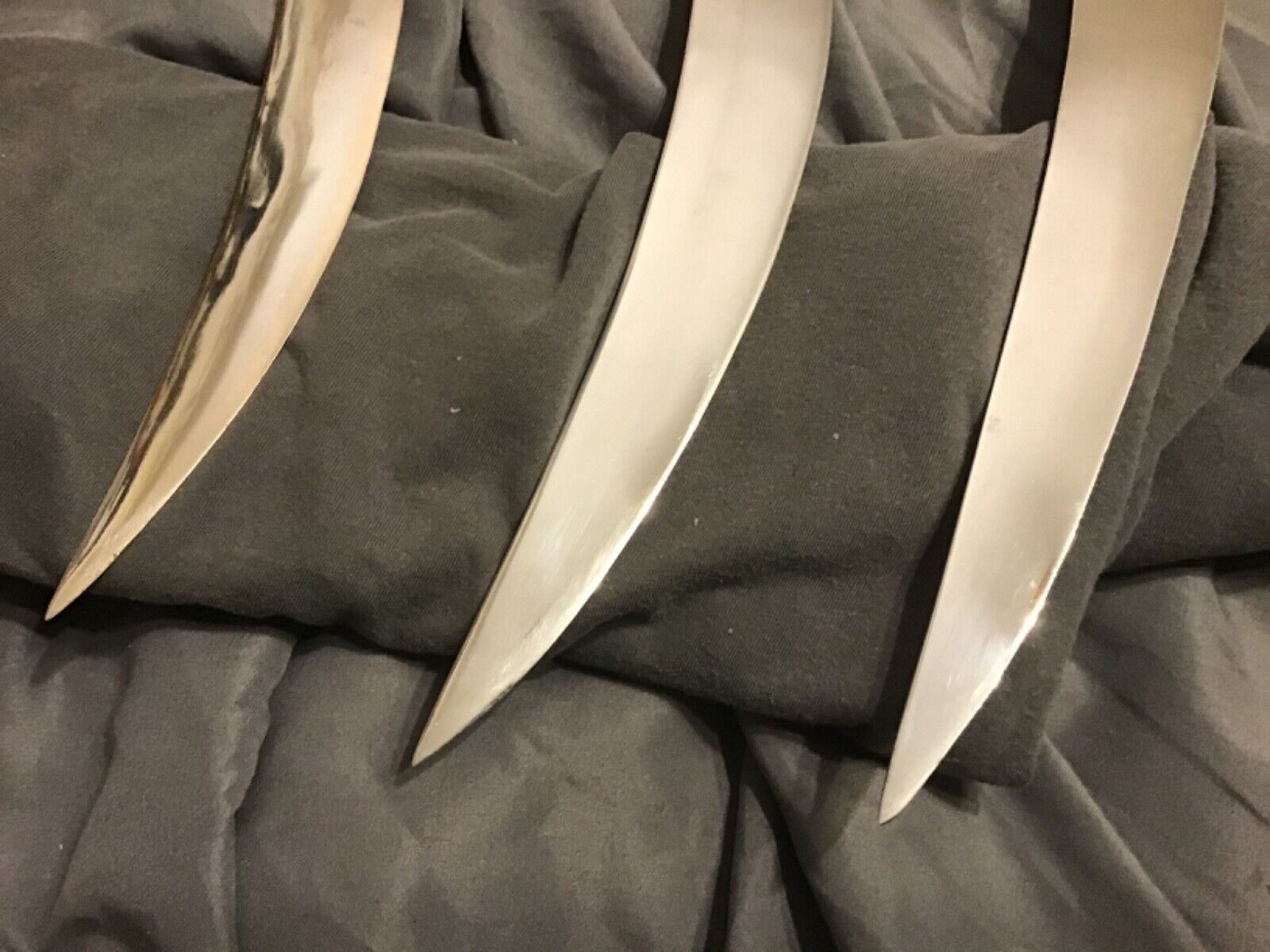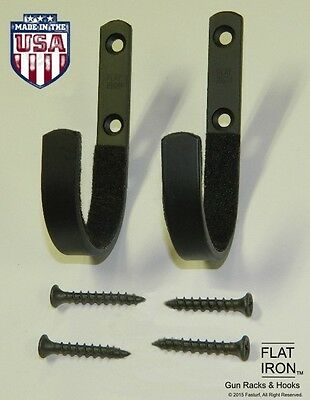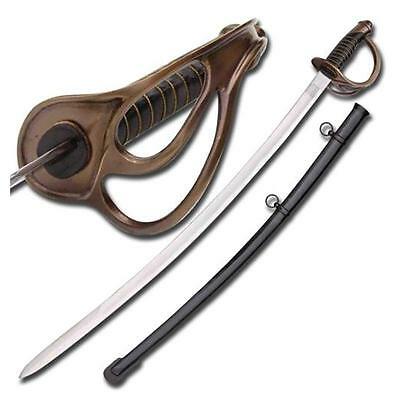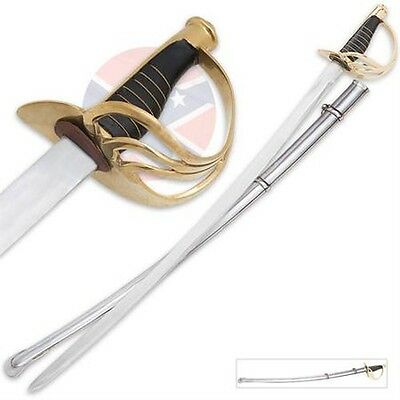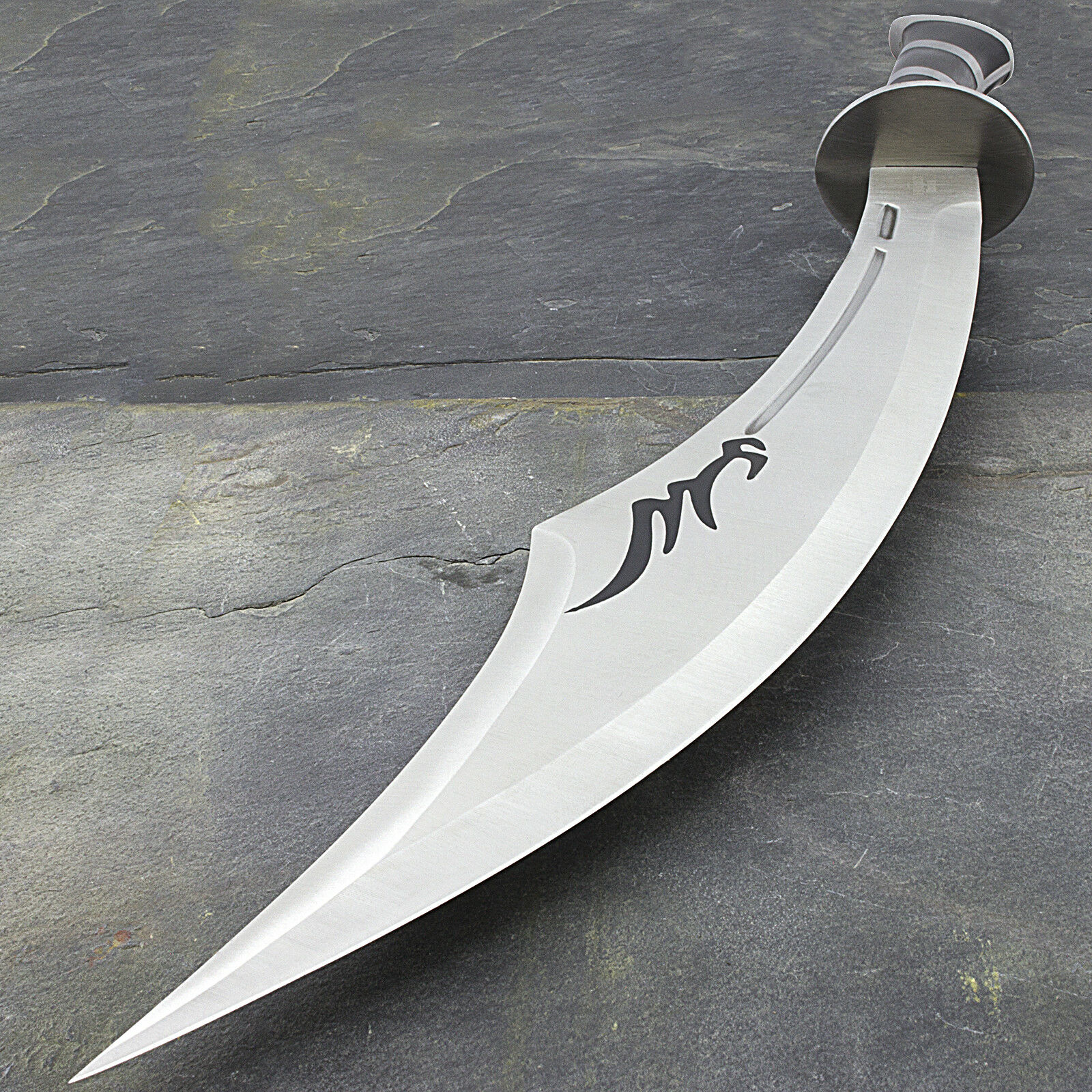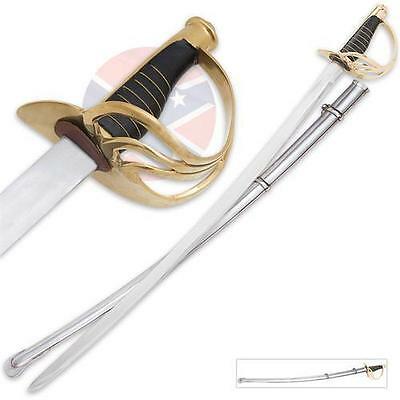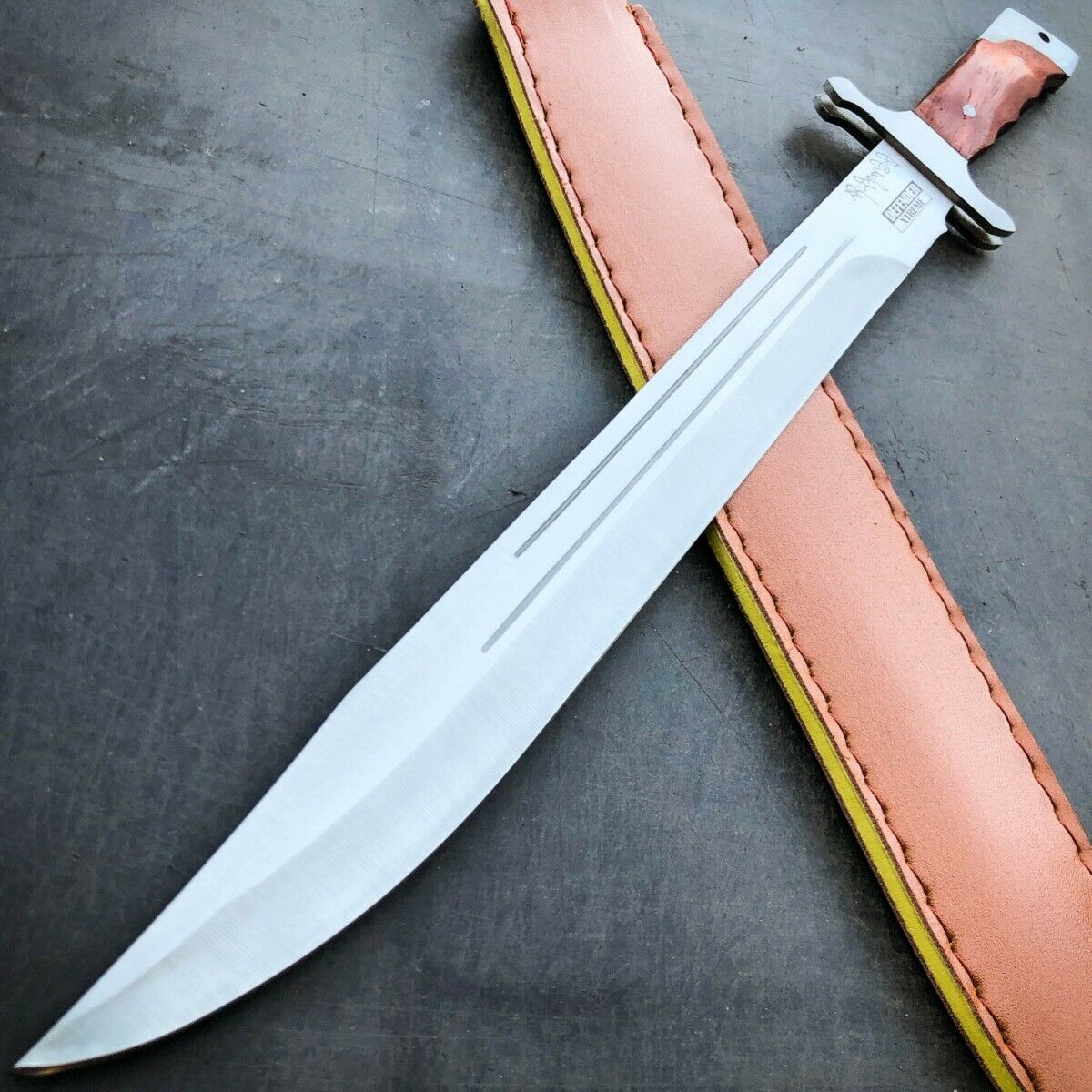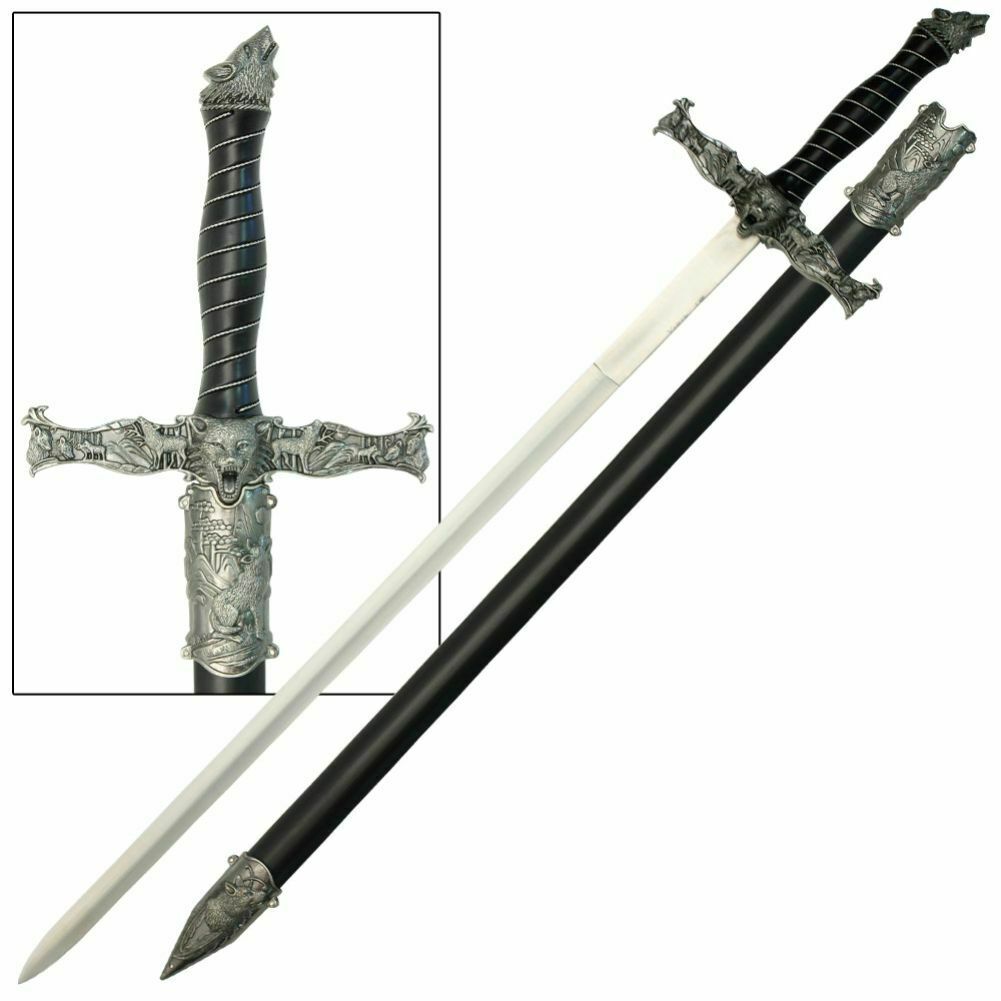-40%
vintage philippines indonesian moro talibong bolo kris barong sword knife. (3)
$ 153.11
- Description
- Size Guide
Description
vintage philippines indonesian moro talibong bolo kris barong sword knife.. (lot of three). Shipping only available within the United States1. Sword - blade length 15 “ inches, blade width, 1 3/4 “ inches, handle length’ 6 “inches
2. Sword - measurement are the same as above
3. Knife - blade length - 10” inches, blade width 1 1/2” inches, handle length 5 1/2” inches
Minor scrapes and scratches on blade and horn handle. Considered usual wear for vintage items. Some small rusting as well.
Talibong style blades are excellent for Sinawali Kali training and Espada y daga (sword and dagger)
Horn handle grip is great for training.
No sheaths for these items.
Sinawali
Sinawali is a template forlearning proper movement. It’s like the paint-by-numbers approach to artwork.
Sinawali, or double-sticktraining, is a practice familiar to many Filipino martial arts. In its mostcommon form, two eskrimadors, each armed with two sticks, face each other andsimultaneously perform an identical series of prescribed strikes, hitting theirsticks together in various rote patterns and rhythms. Meaning, “to weave,”Sinawali gets its name from the intricate, intertwining patterns of the sticksas they are wielded in these drills..
Espada Y Daga (Sword & Knife set)
The Espada Y Daga (Sword& Knife set) is a system or of sword fighting techniques thatwere developed and perfected in the Philippines. The focus of this method offighting is to be able to go in and out of long, middle and close ranges to trapup the enemy and kill. Though it has European influence, it is now a fightingmethod indigenous to the Philippines, one of the inspirations for it’sevolution is said to be European fencing, mostly Spanish; as you can see by theSpanish name of “Espada Y Daga!” One of the few long lasting cultural andmartial influences the Spanish conquistadors left with the Filipinos was theSpanish names to some of the techniques and the names of the fighting systemspopularly known as Arnis or Eskrima (sometimes spelled Escrima). The Filipinosimitated the Spanish version of Espada Y Daga and soon found the weaknessesworking a way to make the offensive moves complicated so Spaniards could notcounter it.
To be able to coordinatesuch skills with a sword and knife together consisted of many hours of trainingdrills for the development of the proper reflexes and good flow in using twoweapons for parrying, checking, scooping, thrusting and slashing. Included inthis training was the incorporation of geometrical footwork, body angling forevasiveness to be able to close in and attack without being killed. Variouslocking, and takedowns from Dumog are normally added once a student hasdemonstrated good fighting skills. Both the Espada and the Daga (sometimesspelled “dagga) are employed at the same time with beautiful looking weave likemovements are very deceiving and quick to finish the job!
Talibong
The “Talibon” or “Talibong” swords comes from Luzon and fromVisayan in the Philippines, and usually referred to as used by the Christiantribes. Also known as “Garab”. Characterized by the heavy blade, slightlyconcave spine and exaggerated belly. The handle is down curving usually withthree petal flower shaped pommel which provide a solid grip to the swordholder. The Talibon is a formidable fighting weapon, extremely lethal in thehands of the experienced warrior

